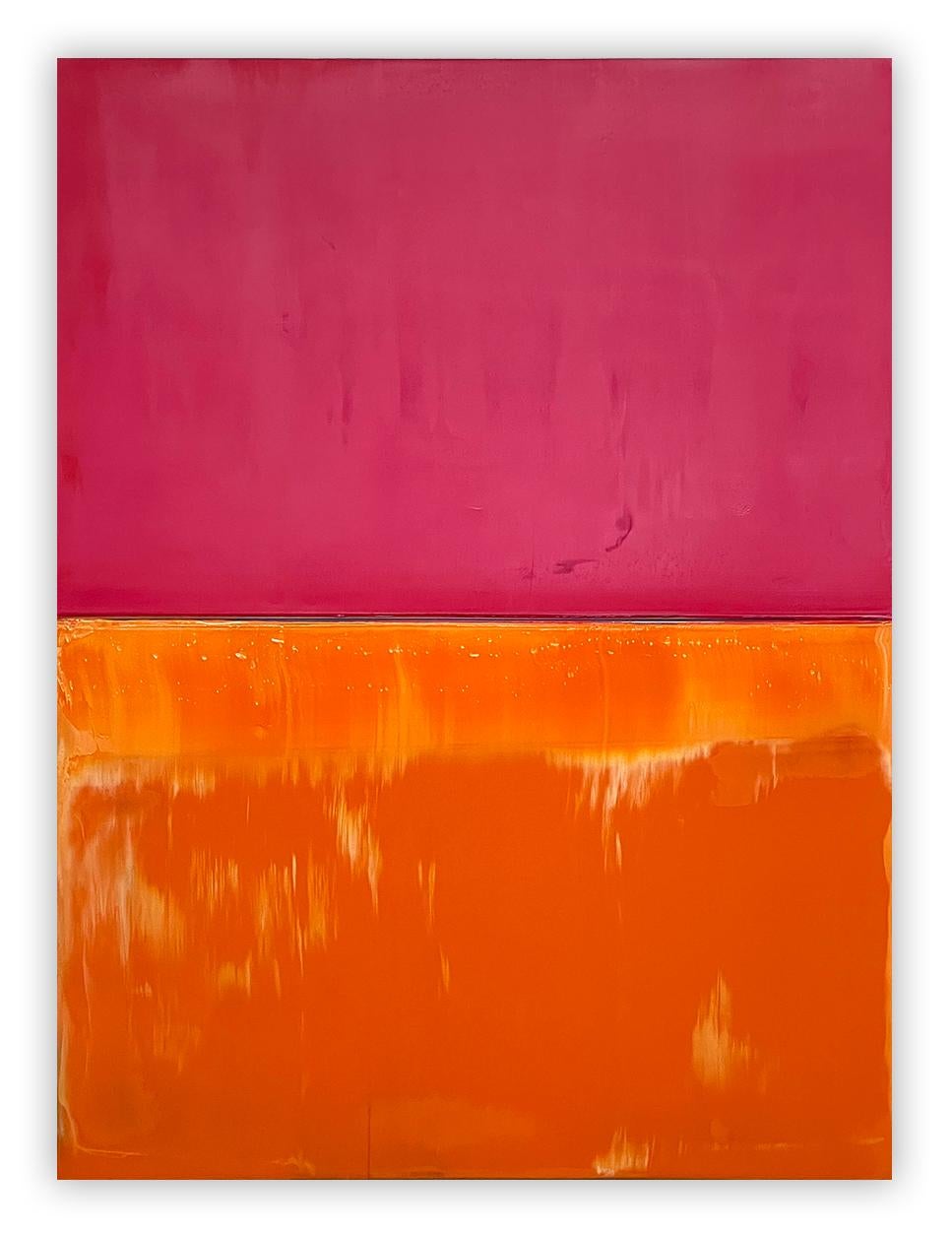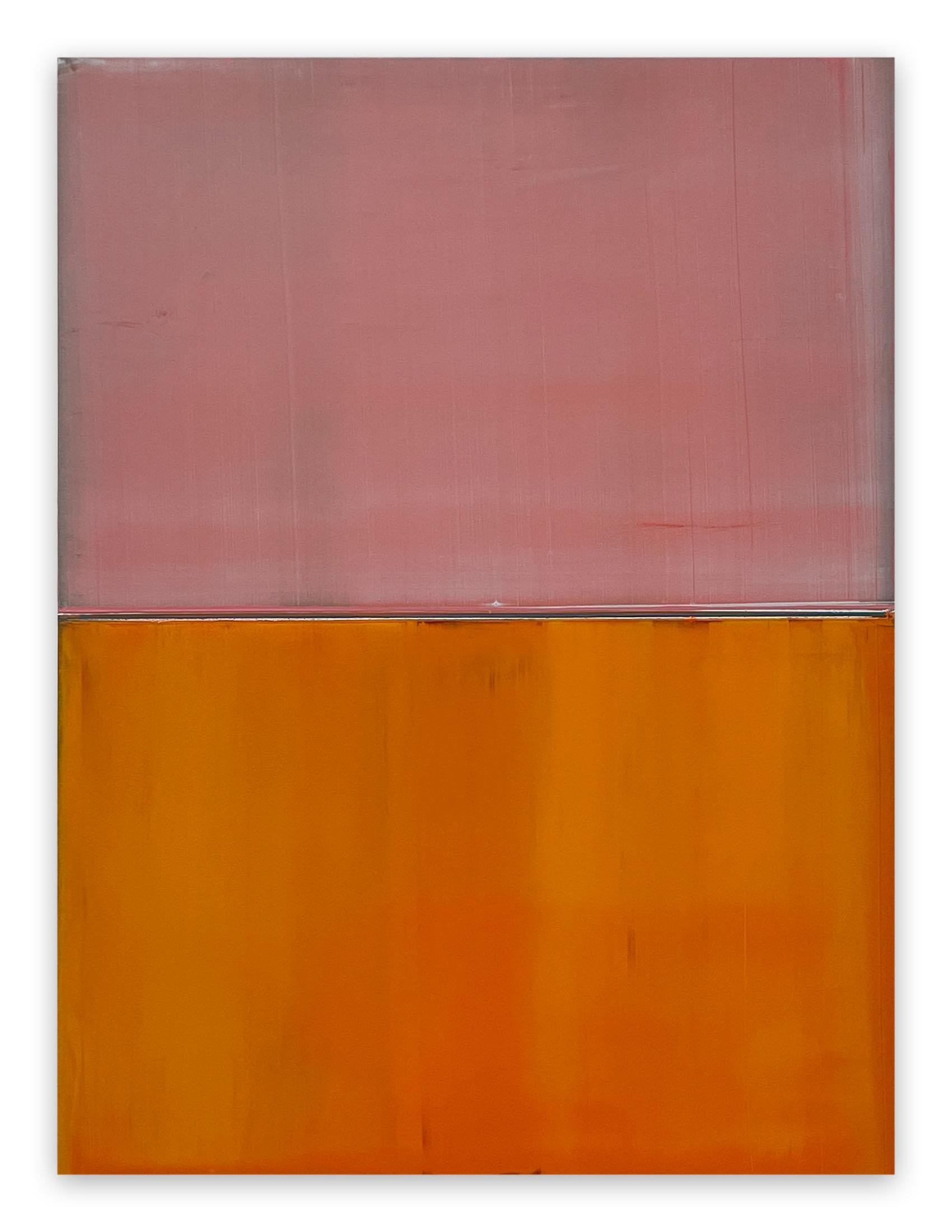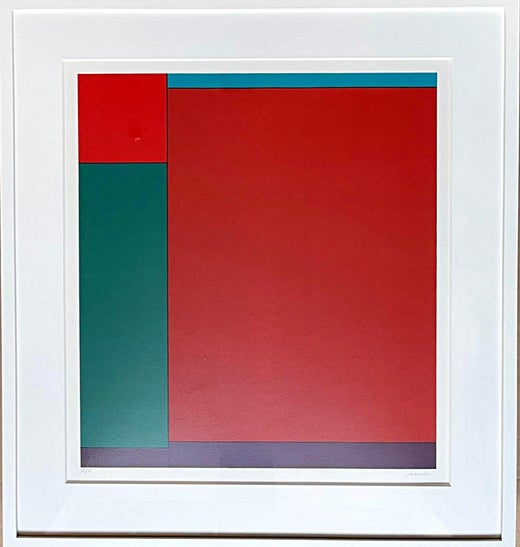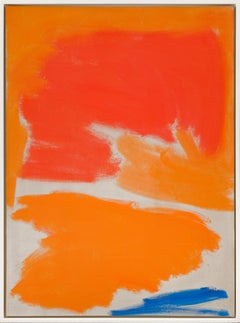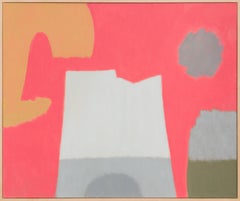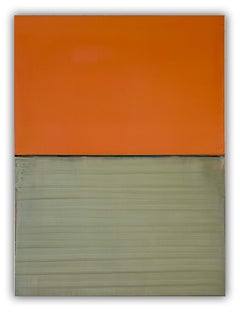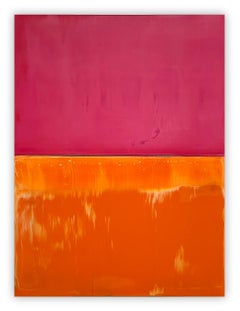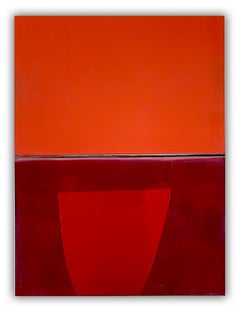Video Loading
Want more images or videos?
Request additional images or videos from the seller
1 of 8
Ludwig SanderArapahoe XII1974
1974
$30,000
£23,432.38
€26,563.40
CA$43,008.36
A$47,177.83
CHF 24,684.16
MX$561,510
NOK 311,776.09
SEK 292,451.54
DKK 198,390.33
About the Item
Waterline Fine Art, Austin, TX is pleased to present the following work:
Oil on canvas. Signed, titled, dated verso.
40 x 44 in.
41.5 x 45.5 in. (framed)
Custom framed in a natural cherry floater.
Provenance
Knoedler Contemporary, New York
Ludwig Sander was exposed to art at any early age, through visits to the Metropolitan Museum of Art. Having studied architecture and architectural drawing in high school, he entered New York University in 1924, but left two years later to become a painter. In 1927, he took a four-month trip to Europe, returning to New York for independent study with Alexander Archipenko, before entering the Art Students League in 1928.
The artist and instructor Vaclav Vytlacil encouraged Sander to study with Hans Hoffman in Munich, which he did in 1931. Hoffman influenced Sander to break away from the more conventional notions of figural and landscape drawing. After returning from Europe, he began painting in a referential abstract style that served as a precursor for his later and more widely known geometric work.
In 1943, he enlisted in the U.S. Army, working in the German Intelligence section in Europe and achieving the rank of staff sergeant. He resumed his art practice in New York after the war, and in 1949,, co-founded “The Club” - an association and discussion group for artists in New York, whose 16 members included: Willem de Kooning, Franz Kline, Al Reinhardt, Conrad Marca-Relli, and Jack Tworkov. Among The Club’s several non-artist members was Leo Castelli, who ran one of the most successful galleries in New York during the latter half of the 20th century. In 1951, Castelli curated the now-famous “Ninth Street Show,” in which Sander participated - the first public presentation of the group of abstract artists that would come to be known as the New York School. Sander was also affiliated with the “Tenth Street Galleries,” an artist-run cooperative of galleries that operated mostly out of the East Village during the 1950s and 60s.
Sander completed his bachelor of arts degree from New York University in 1952, and would go on to teach intermittently throughout his career at institutions such as the Art Students League, the Colorado Springs Fine Arts Center, and Bard College. In 1968, he received a grant from the National Council on the Arts and was awarded the prestigious Guggenheim Foundation Fellowship. Sander exhibited extensively with some of the most prominent gallerists of the 20th century, and his work can be found in many private and public collections around the world, including the: Metropolitan Museum of Art, Whitney Museum of American Art, Solomon R. Guggenheim Museum, Albright-Knox Art Gallery, Aldrich Museum of Contemporary Art, Museum of Fine Arts (Boston), Corcoran Gallery of Art, Hirshhorn Museum and Sculpture Garden, Baltimore Museum of Art, Art Institute of Chicago, Walker Art Center, The Modern (Fort Worth), and the Blanton Museum of Art at the University of Texas at Austin.
Source: Stan Cuba, Associate Consulting Curator, Kirkland Museum of Fine & Decorative Art
- Creator:Ludwig Sander (1906-1975, American)
- Creation Year:1974
- Dimensions:Height: 40 in (101.6 cm)Width: 44 in (111.76 cm)
- Medium:
- Movement & Style:
- Period:
- Condition:Overall very good and stable condition. Inquire for additional details.
- Gallery Location:Austin, TX
- Reference Number:1stDibs: LU2287211547892
Ludwig Sander
Ludwig Sander was a painter of the New York School. He studied under Hans Hoffman and lived and worked in New York City and Sagaponack, Long Island. His work is well represented in many public collections. He was a charter member of the Eighth Street Club (The Club) whose artist members included Willem and Elaine de Kooning, Jimmy Rosati, Giorgio Spaventi, Milton Resnick, Pat Passlof, Earl Kerkam, Ludwig Sander, Angelo Ippolito, Franz Kline, Clyfford Still, and Hans Hofmann.
About the Seller
5.0
Vetted Professional Seller
Every seller passes strict standards for authenticity and reliability
Established in 2020
1stDibs seller since 2023
6 sales on 1stDibs
- ShippingRetrieving quote...Shipping from: Austin, TX
- Return Policy
More From This Seller
View AllUntitled
Located in Austin, TX
Waterline Fine Art, Austin, TX is pleased to present the following work:
Edward Zutrau
Untitled, 1960
Oil on canvas
51.5 x 38.25 in.
53.25 x 40 in. (framed)
Custom framed in a sol...
Category
1960s Abstract Abstract Paintings
Materials
Canvas, Oil
$40,000
Untitled
Located in Austin, TX
Oil on linen. Unsigned.
58.25 x 46.75 in.
59.75 x 48 in. (framed)
Custom framed in a solid maple floater with a polyurethane clear coat finish.
Provenance
Estate of Gottfried Mair...
Category
1970s Abstract Abstract Paintings
Materials
Canvas, Raw Linen, Oil
Captain Cook
By Cleve Gray
Located in Austin, TX
Waterline Fine Art, Austin, TX is pleased to present the following work:
Acrylic on canvas. Signed and dated lower right, titled verso.
69 x 68.25 in.
70.5 x 70 in. (framed)
Custom framed in a solid maple floater.
Provenance
Private Collection, Hilton Head Island, SC
Cleve Gray was born Cleve Ginsberg in New York on September 22, 1918. The family subsequently changed its surname to ‘Gray’ in 1936. He attended the Ethical Culture School in New York, and completed his college preparatory studies at Phillips Academy in Andover, MA, where he won the Morse Prize for most promising art student. In 1940, Gray graduated summa cum laude from Princeton University with degrees in art and archaeology. He wrote his thesis on Chinese landscape painting, which would later become an important influence on his own painterly practice.
Gray joined the U.S. Army in 1942 and was deployed to the U.K., France, and Germany, where he sketched wartime destruction. After the liberation of Paris in 1944, he began informal studies with the French artists André Lhote and Jacques Villon, which continued following the conclusion of the war. Soon after, he began to exhibit his work at the Galerie Durand-Ruel in Paris, followed shortly by his first solo exhibition at the Jacques Seligmann Gallery in New York in 1947. Before 1950, Gray would participate in group exhibitions at such venerable institutions as the Metropolitan Museum of Art, New York; the Corcoran Gallery, Washington, D.C.; the Whitney Museum of American Art, New York; and the Art Institute of Chicago.
In the 1960s, he formed a close friendship with the first generation Abstract Expressionist Barnett Newman. It was during this time that Gray experienced an artistic metamorphosis, dissolving his earlier cubist compositions in a sea of distilled color. This dramatic body of work marked the beginning of an artistic meditation that would last for over 40 years. The rigors of French modernism, the ethos of Abstract Expressionism, and the meditative restraint of Chinese and Japanese scroll painting commingle with astounding affect. The atmospheric, subdued tones of his 1960s paintings gradually gave way to bright, monochromatic fields of color, hazily washed onto the canvas in stain like swathes. Much of his work from the last three decades of his career feature striking graphic brushwork that conjures the influence of Japanese and Chinese calligraphy.
Beginning with his marriage in 1957 to the French author and New Yorker staff writer, Francine Du Plessix, Gray would spend the remainder of his life working out of his home base in Warren, CT, while continuously exhibiting and participating in residencies around the world. He enjoyed representation and exhibitions with some of the most influential galleries of the day, including the Betty Parsons Gallery, Staempfli Gallery, Salander-O’Reilly Galleries, Eva Cohon Gallery, and Berry-Hill Gallery. Cleve Gray died in Hartford, CT in 2004, at the age of 86.
Gray's work is included in the collections of the Metropolitan Museum of Art, the Museum of Modern Art (MoMA), the Whitney Museum of American Art, the Brooklyn Museum, the Solomon R. Guggenheim Museum, and many other museums and institutional collections around the world.
Source: The New York Times and Loretta Howard...
Category
1970s Color-Field Abstract Paintings
Materials
Canvas, Acrylic
$75,000
Argo
By Jacob Kainen
Located in Austin, TX
Waterline Fine Art, Austin, TX is pleased to present the following work:
Oil on canvas. Signed lower right; signed, dated, titled verso (underneath foamcore backing).
49.75 x 59.75...
Category
1990s Abstract Abstract Paintings
Materials
Canvas, Oil
$48,000
According to Equation
Located in Austin, TX
Waterline Fine Art, Austin, TX is pleased to present the following work:
Oil on canvas. Signed, titled, dated verso.
67 x 66 inches67.75 x 66.75 inches (framed)
Custom framed in a solid maple floater.
Warren Rohrer...
Category
1980s Abstract Abstract Paintings
Materials
Oil, Canvas
Untitled
Located in Austin, TX
Waterline Fine Art, Austin, TX is pleased to present the following work:
Oil on canvas. Signed, dated, and stamped verso.
23.75 x 24 in.
25 x 25.5 in. (framed)
Custom framed in a ...
Category
1970s Post-War Abstract Paintings
Materials
Canvas, Oil
You May Also Like
#1742 (Abstract Painting)
By Arvid Boecker
Located in London, GB
Boecker begins each new work by penciling in his composition. But the work ultimately is about the colors and layers that will evolve on the surface over time. He builds his paint up...
Category
2010s Abstract Abstract Paintings
Materials
Wood, Oil, Canvas
#1691 (Abstract painting)
By Arvid Boecker
Located in London, GB
#1691 (Abstract painting)
Oil on Canvas/Wood — Unframed.
Boecker begins each new work by penciling in his composition. But the work ultimately is about the colors and layers that wi...
Category
2010s Abstract Abstract Paintings
Materials
Canvas, Oil
#1744 (Abstract Painting)
By Arvid Boecker
Located in London, GB
Boecker begins each new work by penciling in his composition. But the work ultimately is about the colors and layers that will evolve on the surface over time. He builds his paint up...
Category
2010s Abstract Abstract Paintings
Materials
Canvas, Wood, Oil
#1538 (Abstract painting)
By Arvid Boecker
Located in London, GB
#1538 (Abstract Painting)
Oil on Canvas/Wood - Unframed.
Boecker begins each new work by penciling in his composition. But the work ultimately is about the colors and layers that w...
Category
2010s Abstract Abstract Paintings
Materials
Canvas, Oil
#1538 (Abstract painting)
By Arvid Boecker
Located in London, GB
#1538 (Abstract Painting)
Oil on Canvas/Wood - Unframed.
Boecker begins each new work by penciling in his composition. But the work ultimately is about the colors and layers that w...
Category
2010s Abstract Abstract Paintings
Materials
Canvas, Oil
#1630 (Abstract painting)
By Arvid Boecker
Located in London, GB
#1630 (Abstract painting)
Oil on Canvas - Unframed.
Boecker begins each new work by penciling in his composition. But the work ultimately is about the colors and layers that will ev...
Category
2010s Abstract Abstract Paintings
Materials
Canvas, Oil
More Ways To Browse
Nicolas De Stael
Carlton Hotel
Abstract Art Earth Tones
Painting Green And Yellow
Michael Red
Wichita Art
Contemporary Art Stripes
Unknown Cubist Painting
Vanderbilt Vintage
Abstract Autumn Painting
British Hong Kong
South African Artist
Vintage Acrylic Panels
Art 3d Acrylic
Costa Rica Art
Russian Avant Garde
Word Art
Alabama Art

